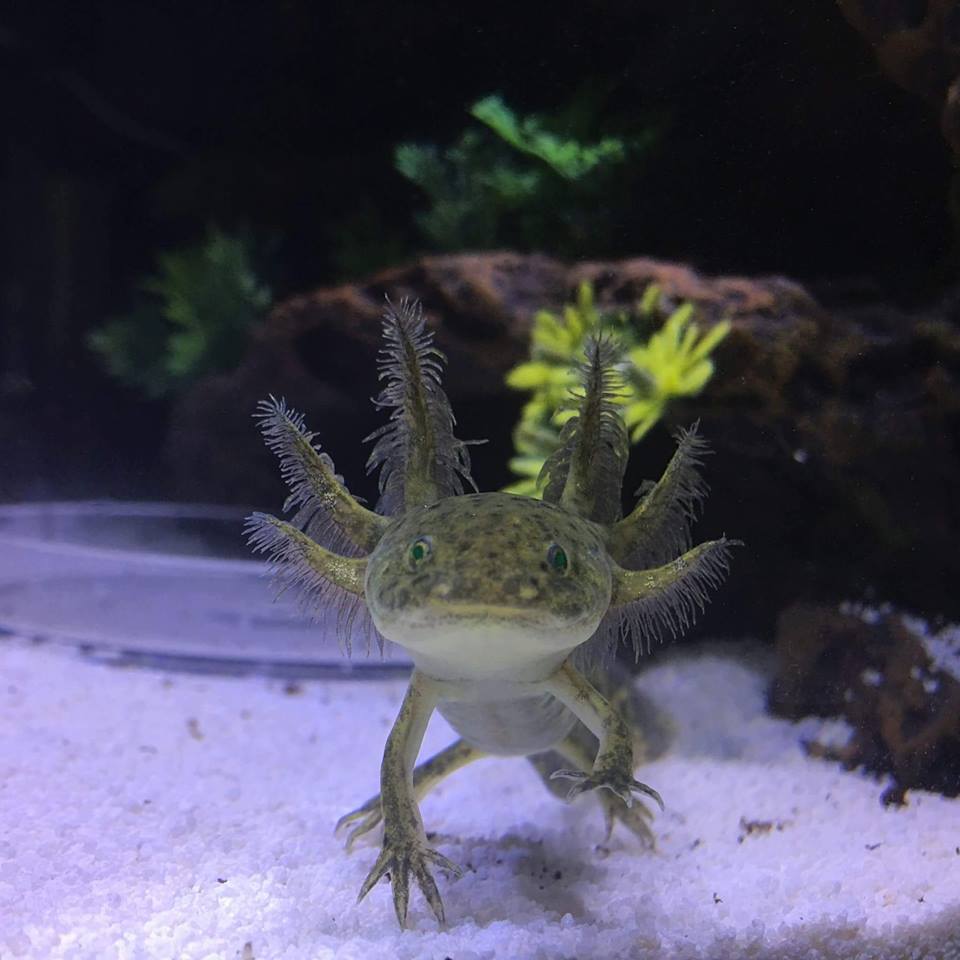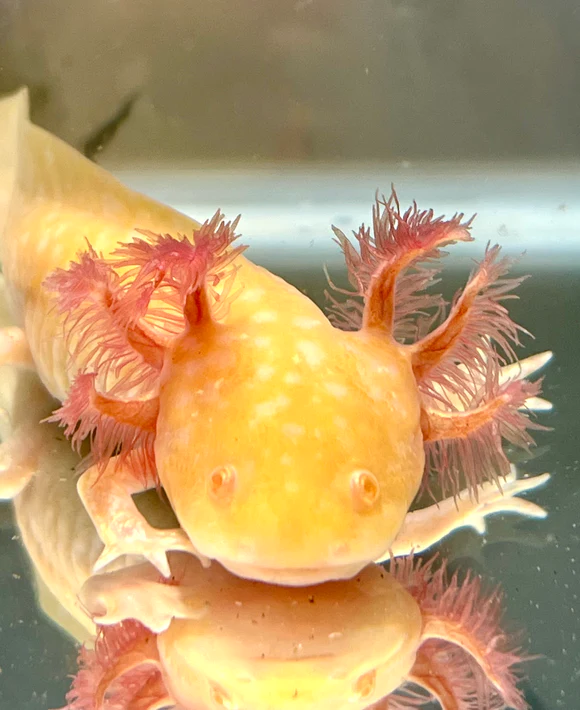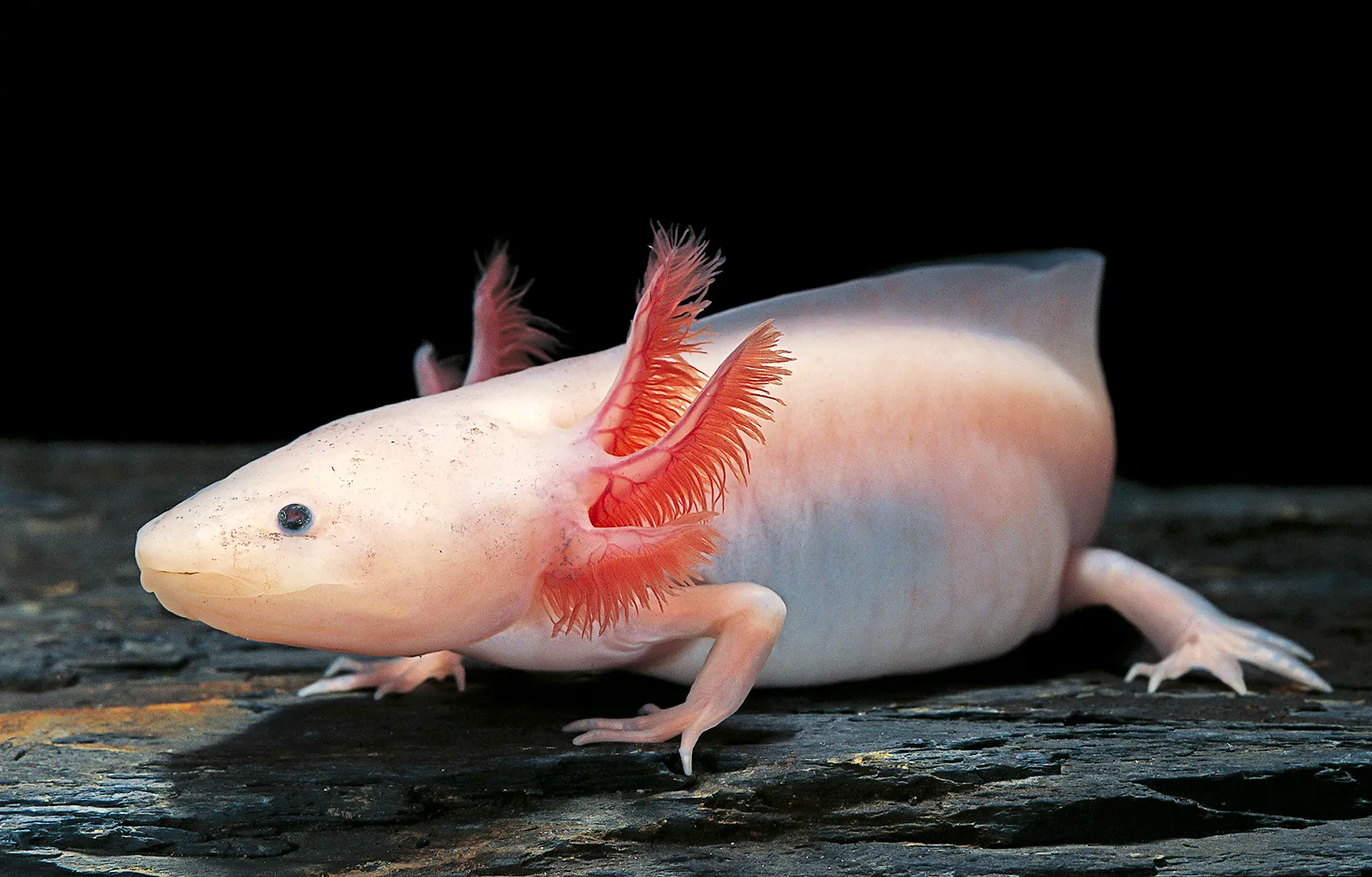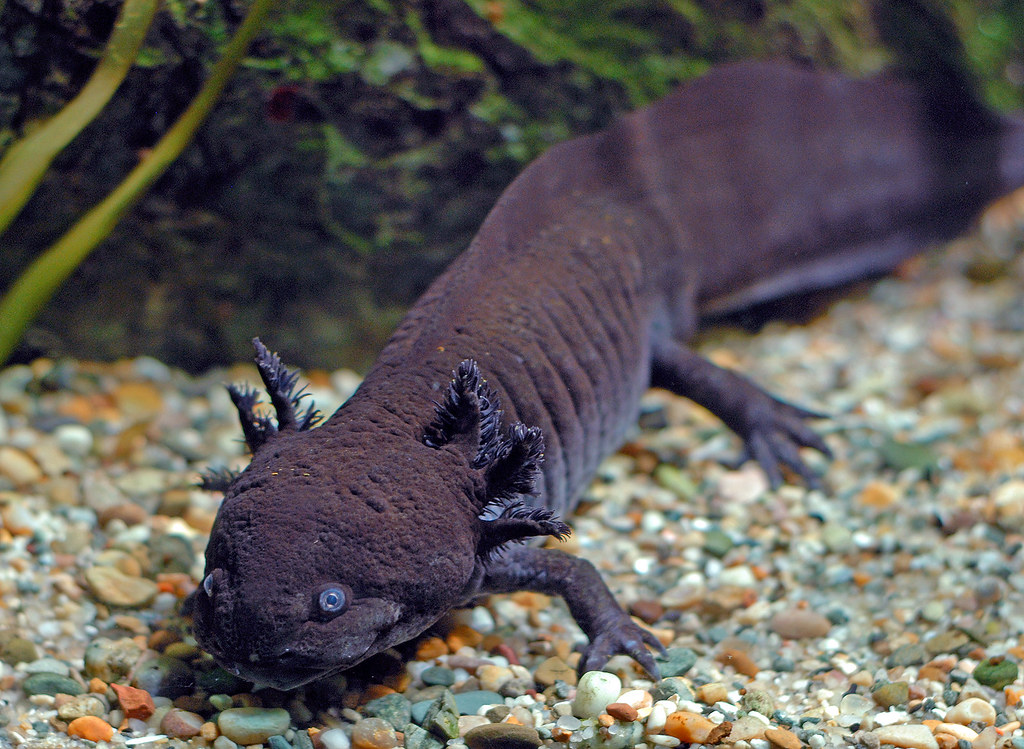
Axolotl
The axolotl, a creature with an otherworldly appearance and remarkable regenerative abilities, has captured the fascination of scientists, biologists, and pet enthusiasts alike. Often referred to as the “Mexican walking fish,” these aquatic salamanders are native to the ancient water systems of Xochimilco, Mexico.
Appearance and adaptations
One of the most striking features of the axolotl is its neotenic state, a phenomenon where the creature reaches sexual maturity without undergoing metamorphosis. Unlike most amphibians, which transition from water-dwelling larvae to land-dwelling adults, axolotls remain aquatic and retain their juvenile features throughout their lives. This includes their frilly external gills, feathery dorsal fin, and a perpetually cute, smiling face.
Axolotls are found in various colors, including wild-type brownish-green

golden albino

leucistic (white with pinkish tones)

and melanoid (completely black)

These color variations have made them popular choices in the pet trade.
Habitat and behavior
Axolotls are exclusively found in the ancient lakes and waterways of Mexico, primarily in Lake Xochimilco and Lake Chalco. These habitats consist of murky, slow-moving waters with plenty of aquatic vegetation. Axolotls are nocturnal creatures, preferring to hunt and explore during the night. They are carnivorous, feeding on small aquatic prey such as insects, worms, and even small fish.
Axolotl: regenerative superstar
One of the axolotl’s most astonishing traits is its extraordinary regenerative abilities. These creatures can regenerate lost limbs, spinal cord, heart, and even parts of their brain. While humans and many other animals have limited regenerative capabilities, axolotls have mastered the art of regrowth.
Scientists have been studying axolotls in hopes of uncovering the secrets behind their regenerative powers. Understanding their regenerative mechanisms could potentially revolutionize medical science and lead to breakthroughs in regenerative medicine.
Conservation challenges
Despite their unique qualities, axolotls are currently facing a grim reality. Their natural habitat is rapidly deteriorating due to pollution, habitat destruction, and the introduction of non-native species. Invasive species, such as tilapia and carp, have disrupted the delicate ecological balance of the lakes, competing with axolotls for resources.
The wild axolotl population has been on a sharp decline, leading to their classification as critically endangered by the International Union for Conservation of Nature (IUCN). If conservation efforts are not intensified, these captivating creatures could face extinction in the wild within the next few decades.
Axolotl: conservation efforts
Efforts to save the axolotl from extinction are underway. Several organizations, including Mexican government agencies and international conservation groups, are collaborating to protect their natural habitat and establish breeding programs. These initiatives aim to restore water quality, remove invasive species, and promote responsible tourism to the axolotl’s native lakes.
Moreover, axolotls have become popular pets in the aquarium trade, both for hobbyists and scientists. This popularity has led to captive breeding programs and the establishment of assurance colonies to safeguard genetic diversity and maintain healthy populations in captivity.
The axolotl’s unique appearance, behavior, and regenerative abilities make it a remarkable creature that continues to captivate the scientific community and nature enthusiasts around the world. While they face significant conservation challenges in the wild, concerted efforts are being made to protect and preserve these extraordinary salamanders for future generations to admire and study. The axolotl is a testament to the wonders of the natural world and the importance of safeguarding our planet’s biodiversity.
